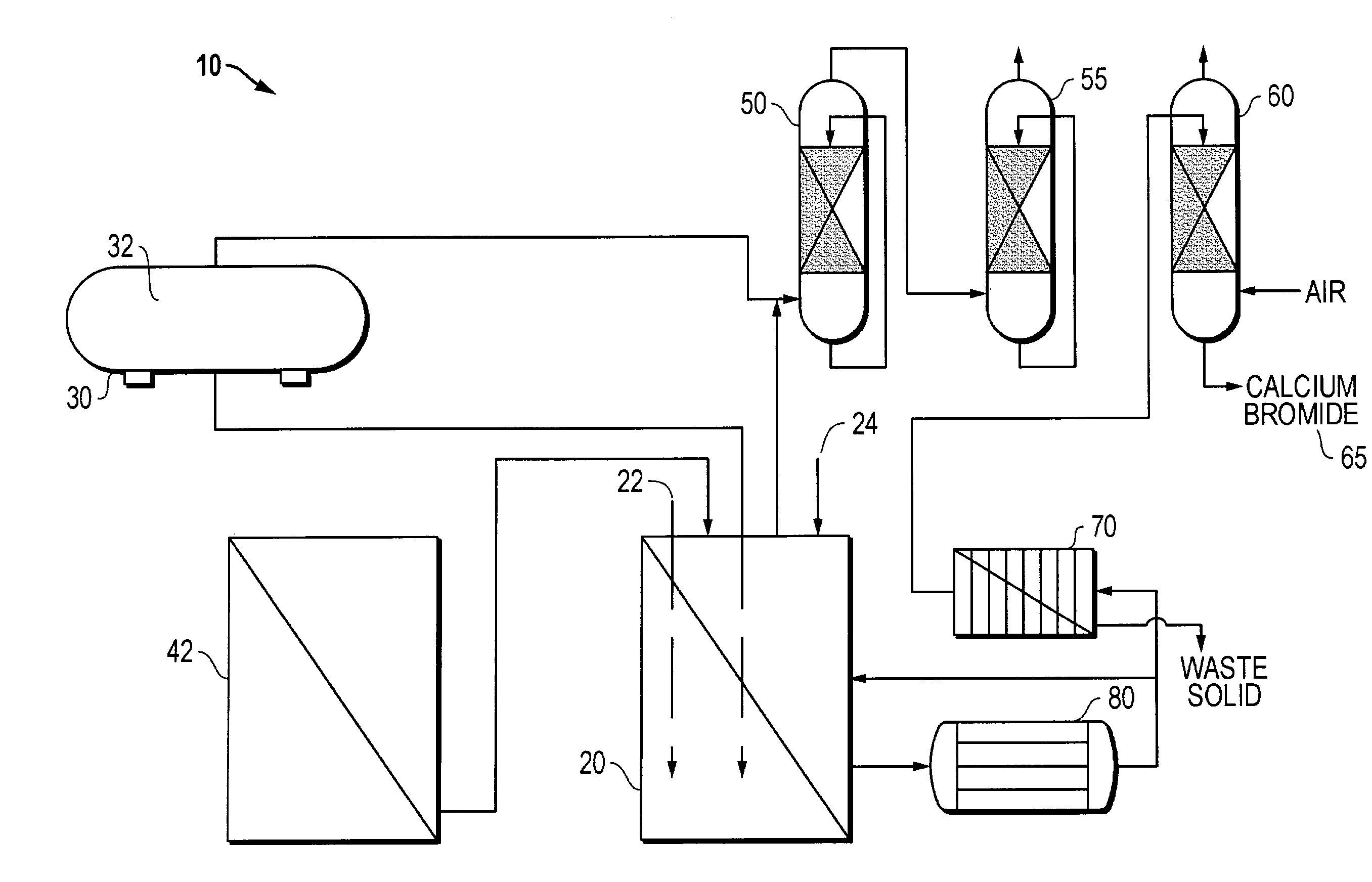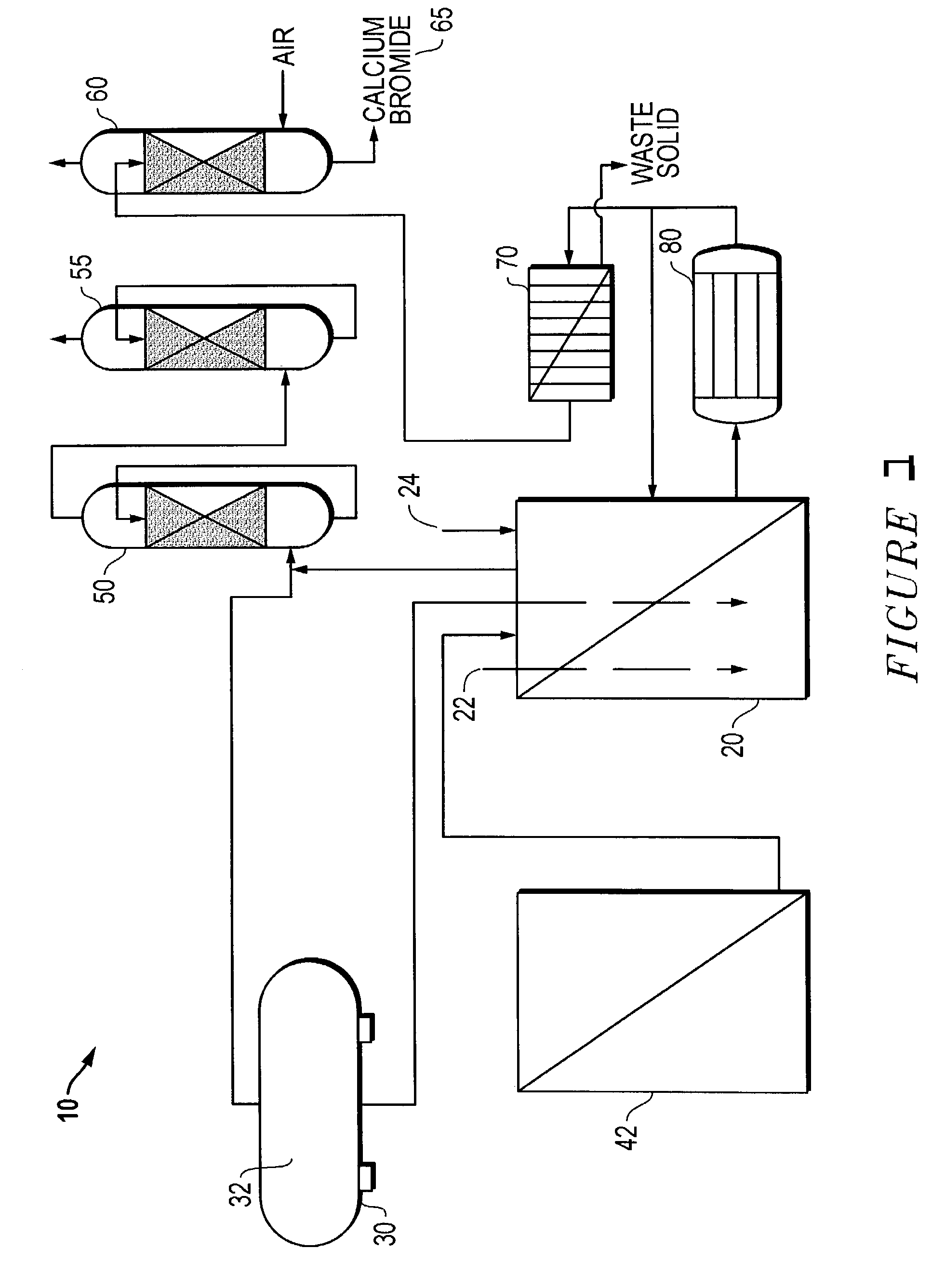Method for producing a halide brine
a technology of halide brine and brine brine, which is applied in the field of halide brine production, can solve the problems of unreacted formaldehyde in the product mixture, difficult to remove, and expensive equipment for producing halide acid from halogen and hydrogen, and achieves the effects of eliminating additional costs, rapid manufacturing of halide brine, and simple method
- Summary
- Abstract
- Description
- Claims
- Application Information
AI Technical Summary
Benefits of technology
Problems solved by technology
Method used
Image
Examples
example
[0034]Product: Calcium Bromide from Bromine
Process Overview
[0035]Calcium bromide production in this test was a batch process, meaning that predetermined amounts of raw materials were added to the reactor in a stepwise fashion to produce a fixed amount of calcium bromide. When the reactions were complete, the product was removed from the reactor before adding the raw materials for the next batch.
II. Operating Procedure
[0036]Due to the ‘batch processing’ nature of the operation, initial start-up, normal operations and shut downs are integral part of each batch operation, and therefore are not addressed specifically as separate procedures.
[0037]The bromine scrubber system was checked to be running. The damper valve to the reactor vent was opened to the scrubber system.
[0038]1370 gal. (5,185 L) water was charged to a conventional mixing tank (reactor), a 4500 gal. (17,032 L) capacity agitated tank plus recycling pump was used.
[0039]Agitator was started.
[0040]The hydrated lime...
PUM
| Property | Measurement | Unit |
|---|---|---|
| density | aaaaa | aaaaa |
| density | aaaaa | aaaaa |
| density | aaaaa | aaaaa |
Abstract
Description
Claims
Application Information
 Login to View More
Login to View More - R&D
- Intellectual Property
- Life Sciences
- Materials
- Tech Scout
- Unparalleled Data Quality
- Higher Quality Content
- 60% Fewer Hallucinations
Browse by: Latest US Patents, China's latest patents, Technical Efficacy Thesaurus, Application Domain, Technology Topic, Popular Technical Reports.
© 2025 PatSnap. All rights reserved.Legal|Privacy policy|Modern Slavery Act Transparency Statement|Sitemap|About US| Contact US: help@patsnap.com


